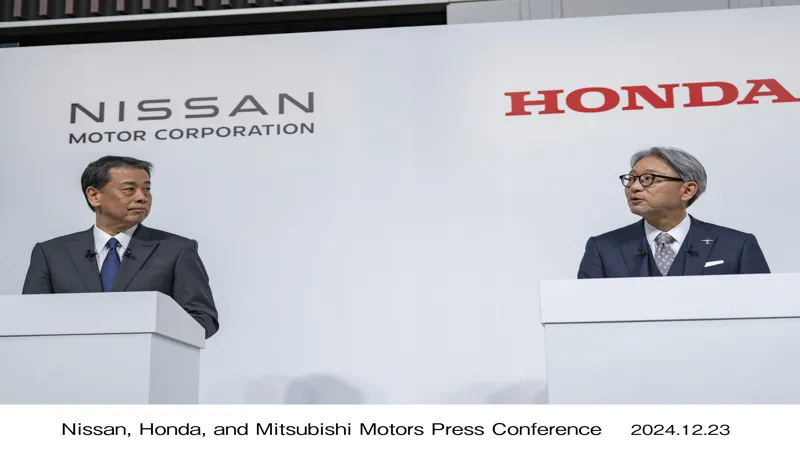
Honda Nissan Merger Officially Off: What’s Next?
The recent announcement that the proposed merger between Honda and Nissan is definitively off marks a significant shift in the automotive landscape. Originally aimed at forming the world’s third-largest automaker, the merger quickly became fraught with complications, raising questions about control, management, and financial viability. With Nissan already entrenched in an alliance with Renault and Mitsubishi, the complexities of merging operations became overly burdensome. As both companies refocus on their individual strategies in a rapidly evolving market, the implications of this dissolution will resonate throughout the industry, particularly as they navigate the transition to electrification and intelligent vehicles.
| Attribute | Details |
|---|---|
| Merger Status | Officially dead; discussions terminated. |
| Initial Announcement Date | Late December. |
| Goal of Merger | To create the world’s third-largest automaker, surpassing Volkswagen Group. |
| Nature of Merger | Not viewed as a merger of equals; seen as Honda potentially taking over Nissan. |
| Nissan’s Current Alliances | Part of a three-way alliance with Mitsubishi and Renault; Renault owns 37.5% of Nissan. |
| Honda’s Preference | Wanted Nissan to buy Renault’s stake to avoid foreign control. |
| Nissan’s Financial Situation | Does not have enough cash to buy Renault’s stake; has incurred losses over the past two quarters. |
| Challenges in Merger Discussions | Disagreements on management structure and Nissan’s valuation. |
| Future Collaboration | Nissan and Honda will collaborate strategically on electrified vehicles. |
| Honda’s Financial Performance | Reported a 6% increase in operating profits for the last quarter. |
| Nissan’s Turnaround Plan | Cutting 9,000 jobs, closing three factories, and reducing shifts. |
| Rumored Partnerships | Potential partnership with Taiwanese company Foxconn. |
Understanding the Failed Merger
The failed merger between Honda and Nissan aimed to create one of the largest car companies in the world, but it didn’t work out. Many people thought that Honda wanted to take over Nissan, which made the proposal seem unfair. This situation became complicated because Nissan was already in a partnership with Renault and Mitsubishi, making it hard for them to merge with Honda. The merger was like a puzzle that just couldn’t fit together.
When the merger was announced, it sounded exciting, but there were many problems underneath. Nissan’s financial struggles made it difficult for them to buy out Renault’s shares, and Honda didn’t want to have a lot of foreign control over Nissan. Both companies realized that their goals were not aligned, and the idea of merging became less appealing. In the end, they decided it was better to stop trying to merge and focus on their own paths.
Frequently Asked Questions
Why was the Honda and Nissan merger proposed?
The merger aimed to create the world’s third-largest automaker, enhancing competitiveness against major players like Volkswagen.
What led to the decision to end the merger discussions?
Nissan and Honda could not agree on management structure, valuation, or Renault’s stake, making the merger unfeasible.
How does Renault’s stake in Nissan affect the merger?
Renault owns 37.5% of Nissan, complicating Honda’s plans, as they preferred Nissan to buy out Renault’s share.
What does the future hold for Nissan and Honda after the merger talks?
Both companies will focus on a strategic partnership to collaborate on intelligent and electrified vehicles.
What recent changes has Nissan announced after the merger failure?
Nissan announced a turnaround plan, including cutting 9,000 jobs and closing three factories, due to recent financial losses.
How is Honda’s financial situation after the merger discussions?
Honda reported a 6% increase in operating profits and is not expected to suffer from the merger’s failure.
What are the implications of this failed merger for the auto industry?
The end of the merger highlights the challenges of collaboration in a volatile market, especially with the shift towards electrification.
Summary
The proposed merger between Honda and Nissan has ended, as it was viewed more as Honda taking over struggling Nissan rather than a true partnership. The plan aimed to create the third-largest automaker globally but faced numerous challenges, including Nissan’s existing alliance with Renault and Mitsubishi. Disagreements over management and valuation also played a crucial role in the merger’s collapse. Both companies decided to stop discussions and focus on a strategic partnership instead. While Honda is doing well financially, Nissan is facing significant losses and plans to cut jobs and close factories.